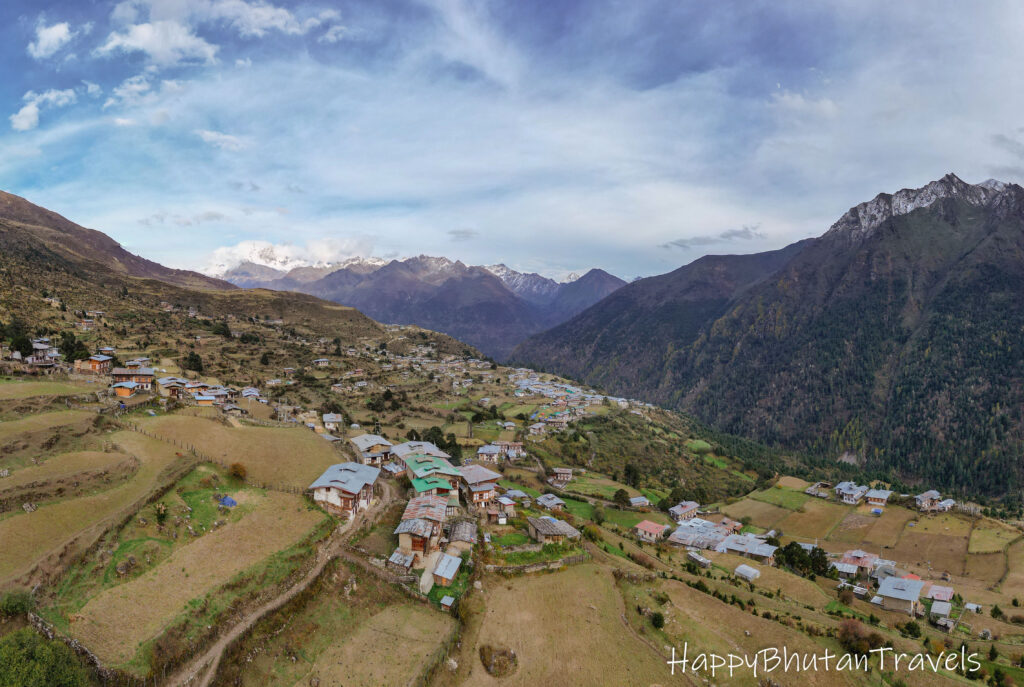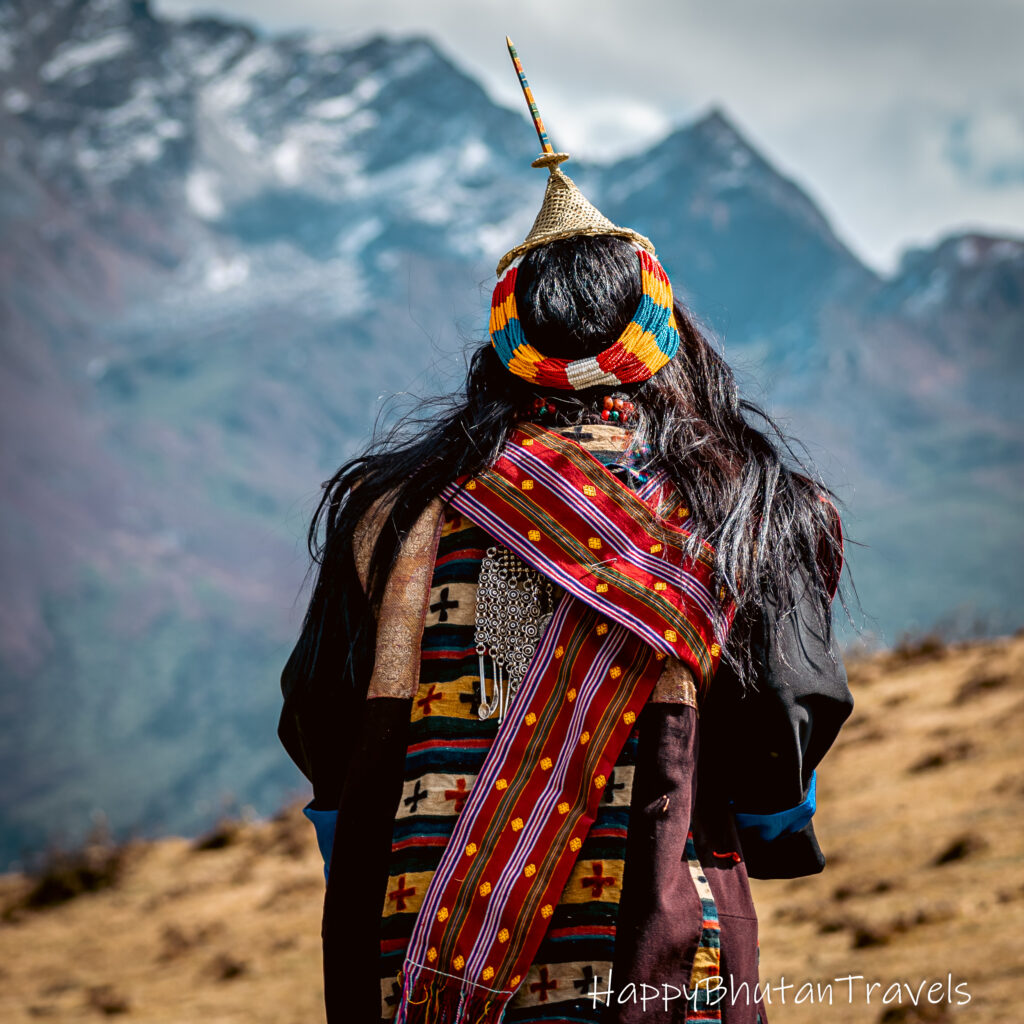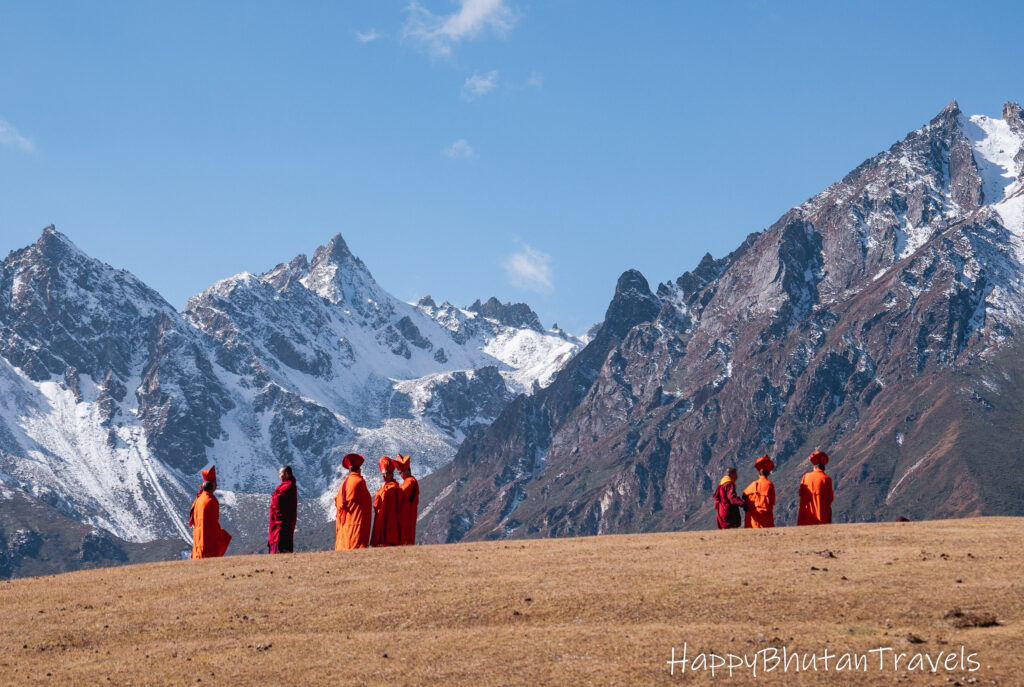Laya is a picturesque village nestled deep in the remote highlands of Bhutan, renowned for its unique culture, stunning landscapes, and the warm hospitality of its people. Situated at an altitude of around 3,800 meters (12,500 feet) above sea level, Laya is one of the highest settlements in Bhutan and is located close to the border with Tibet.
Laya is located in the Gasa district of northwestern Bhutan, surrounded by snow-capped peaks and pristine alpine meadows. The village is accessible via a challenging trek from Gasa or through the Jigme Dorji National Park, offering breathtaking views of the Himalayas along the way. The terrain is rugged yet awe-inspiring, with crystal-clear rivers and dense forests that are home to a variety of wildlife, including the elusive snow leopard.
The Layap people are of Tibetan origin and have preserved their unique cultural identity over centuries of isolation. They are renowned for their distinctive dress, which includes the traditional costume for women called the “kira” adorned with intricate patterns and jewelry. The men wear a distinctive woolen jacket known as the “go,” and both genders often wear conical bamboo hats adorned with turquoise and silver ornaments.
Laya is also famous for its vibrant festivals, such as the Royal Highlander Festival, where Layaps showcase their traditional songs, dances, and sports like archery and horse riding. These festivals celebrate their rich cultural heritage and provide an opportunity for visitors to experience the hospitality and warmth of the Layap people firsthand.
The main livelihood of the Layap people revolves around yak herding and agriculture. Yaks are integral to their way of life, providing milk, meat, and wool for clothing and blankets. During the summer months, Layaps move with their yaks to high-altitude pastures known as “thrams” to graze, returning to Laya during the winter.
In addition to traditional occupations, tourism has emerged as a supplementary source of income for the community. Visitors trekking through Laya are often welcomed into the homes of local families, offering a glimpse into their daily lives and providing an opportunity to learn about their customs and traditions firsthand.
Despite its natural beauty and cultural richness, Laya faces challenges such as limited access to healthcare, education, and basic amenities due to its remote location. Efforts are underway to improve infrastructure and promote sustainable tourism to benefit the local economy while preserving the unique environment and culture of the region.
Laya exemplifies the essence of Bhutan’s pristine beauty and cultural diversity. Its remote location, stunning landscapes, and vibrant traditions make it a destination of choice for adventurous travelers seeking an authentic experience in the Himalayan kingdom. Visiting Laya not only offers breathtaking views and encounters with wildlife but also provides a deeper understanding of Bhutanese culture and the resilience of its people in the face of modern challenges.


